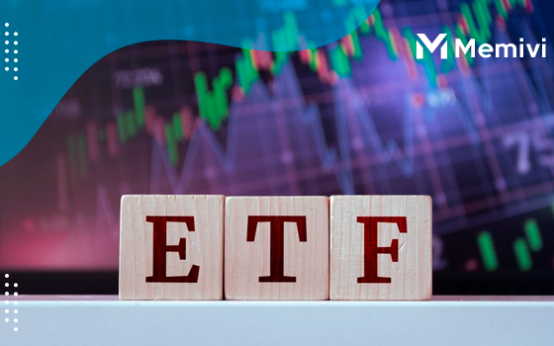
Long-term bonds are generally less volatile than short-term bonds or stocks, and they offer higher yields, making them an attractive option for investors looking for steady returns. However, with so many options available in the market, choosing the right long-term bond ETF can be difficult.
In this post, we’ll be exploring the top 10 long-term bond ETFs that you should consider investing in. We’ll be examining the different features of each fund, such as their expense ratios, yields, and duration, in order to help you make an informed decision when it comes to investing your money.
So, whether you’re a seasoned investor or just starting out, read on to discover the top 10 long-term bond ETFs that can provide you with stability and long-term growth.
Understanding the role of long-term bonds in a diversified investment portfolio
Understanding the role of long-term bonds in a diversified investment portfolio is crucial for investors seeking stability and long-term growth. Long-term bonds, typically with maturities of 10 years or more, offer unique advantages that can enhance the risk-adjusted return profile of a portfolio.
First and foremost, long-term bonds are known for their ability to provide a steady income stream. As interest rates tend to be higher for longer-dated bonds, investors can enjoy higher coupon payments compared to short-term bonds. This consistent income can be particularly appealing for those looking for a reliable source of cash flow, such as retirees or income-oriented investors.
Furthermore, long-term bonds play a vital role in diversification. When combined with other asset classes like stocks and short-term bonds, they can help reduce overall portfolio volatility. This is due to their inverse relationship with interest rates – when rates fall, bond prices tend to rise, offsetting potential losses in other areas of the portfolio. This negative correlation can act as a buffer during periods of market turbulence, providing stability and preserving capital.
Top 10 long-term bond ETFs for stability and steady income
When it comes to investing in long-term bonds, stability and steady income are two key factors to consider. Long-term bond exchange-traded funds (ETFs) provide investors with an opportunity to achieve both objectives. These ETFs are designed to track the performance of a specific index composed of long-term bonds, offering diversification and potentially higher yields compared to individual bonds.
Here are the top 10 long-term bond ETFs that investors can consider for stability and steady income:
- iShares 20+ Year Treasury Bond ETF (TLT): This ETF tracks the performance of U.S. Treasury bonds with maturities of 20 years or more. It offers exposure to government debt and can be a reliable option for conservative investors seeking stability.
- Vanguard Extended Duration Treasury ETF (EDV): As the name suggests, this ETF focuses on U.S. Treasury bonds with extended durations. It offers potential for higher yields but may also carry higher interest rate risk.
- iShares iBoxx $ Investment Grade Corporate Bond ETF (LQD): This ETF provides exposure to investment-grade corporate bonds, offering a balance between stability and income. It includes bonds from various sectors like finance, industrials, and utilities.
- SPDR Bloomberg Barclays Long-Term Corporate Bond ETF (LWC): This ETF tracks the performance of the Bloomberg Barclays U.S. Long Corporate Index, which includes investment-grade corporate bonds with maturities of 10 years or more.
- iShares iBoxx $ High Yield Corporate Bond ETF (HYG): For investors seeking higher yields, this ETF focuses on high-yield corporate bonds. It offers exposure to bonds with lower credit ratings, potentially leading to higher income but also higher risk.
- iShares iBoxx $ Investment Grade Corporate Bond ETF (IGSB): This ETF focuses on investment-grade corporate bonds with shorter maturities, providing stability and income while mitigating interest rate risk.
- Vanguard Long-Term Corporate Bond ETF (VCLT): This ETF seeks to track the performance of the Bloomberg Barclays U.S. Long Corporate Index. It offers exposure to investment-grade corporate bonds with maturities of 10 years or more.
- SPDR Portfolio Long Term Corporate Bond ETF (SPLB): This ETF provides broad exposure to U.S. investment-grade corporate bonds with long maturities. It aims to offer investors a low-cost option for accessing the long-term corporate bond market.
- iShares iBoxx $ Investment Grade Corporate Bond ETF (IBCC): This ETF tracks the performance of a broad index of investment-grade corporate bonds. It can serve as a diversified option for investors seeking stability and income.
- Vanguard Long-Term Government Bond ETF (VGLT): This ETF focuses on U.S. government bonds with long maturities. It offers exposure to Treasury bonds and can be a suitable choice for investors looking for stability in their long-term bond investments.
Before investing in any of these ETFs, it is crucial to carefully consider your investment goals, risk tolerance, and consult with a financial advisor. While long-term bond ETFs can provide stability and steady income, it’s important to evaluate your individual needs and make informed decisions to navigate the world of bond investing.
Factors to consider when selecting long-term bond ETFs

When it comes to selecting long-term bond ETFs, there are several factors that investors should carefully consider. These factors play a crucial role in determining the stability and potential returns of the investment. Here are some key considerations to keep in mind:
- Credit Quality: One of the primary factors to consider is the credit quality of the underlying bonds held by the ETF. Higher credit quality bonds, such as those issued by governments or highly rated corporate entities, typically offer more stability but may have lower yields. On the other hand, lower credit quality bonds may offer higher yields, but they also come with increased risk.
- Duration: Duration refers to the sensitivity of a bond’s price to changes in interest rates. Long-term bond ETFs generally have a higher duration, meaning their prices are more sensitive to interest rate fluctuations. Investors should assess their risk tolerance and consider their outlook on interest rates when selecting long-term bond ETFs.
- Expense Ratio: The expense ratio of an ETF is an important factor to consider as it directly affects the overall returns. Lower expense ratios can lead to higher net returns for investors. It’s essential to compare expense ratios across different ETFs to ensure you’re getting value for your investment.
- Yield: Another crucial factor to evaluate is the yield offered by the long-term bond ETF. The yield represents the annual income generated by the ETF in relation to its price. Investors should assess the yield relative to their income needs, risk tolerance, and prevailing interest rates.
- Diversification: Diversification is key in any investment portfolio, and long-term bond ETFs should be no exception. Look for ETFs that provide exposure to a diversified range of bonds across various sectors, regions, and maturities. This helps to spread risk and mitigate the impact of any specific bond issuer or sector performance.
- Liquidity: Liquidity is an important consideration, especially for investors who may need to buy or sell their ETF shares quickly. Higher liquidity ensures that there is a robust market for the ETF, reducing the risk of large bid-ask spreads and potential difficulties in executing trades.
- Fund Size: The size of the ETF can also be a factor to consider. Larger funds generally have more assets under management, which can enhance liquidity and potentially reduce tracking errors. However, smaller funds may offer more focused exposure or niche strategies that align with specific investment objectives.
By carefully evaluating these factors, investors can make informed decisions when selecting long-term bond ETFs that align with their investment goals, risk tolerance, and desired returns. Remember to conduct thorough research, consult with a financial advisor if necessary, and review the fund’s prospectus before making any investment decisions.
Final Thoughts
We hope you found our blog post on the top 10 long-term bond ETFs informative and helpful. Navigating the world of investments can be challenging, especially when it comes to finding stability and long-term growth. By exploring these top 10 bond ETFs, you now have a valuable resource to help you make informed decisions for your investment portfolio. Remember to always do your due diligence and consult with a financial advisor for personalized advice. Here’s to your financial success and a stable future!


 Inheriting a Windfall: Essential Steps to Secure Your Financial Future <p class='sec-title' style='line-height: normal; font-weight: normal;font-size: 16px !important; text-align: left;margin-top: 8px;margin-bottom: 0px !important;'> It's important to remember that the way you handle this money can have a significant impact on your financial future. </p>
Inheriting a Windfall: Essential Steps to Secure Your Financial Future <p class='sec-title' style='line-height: normal; font-weight: normal;font-size: 16px !important; text-align: left;margin-top: 8px;margin-bottom: 0px !important;'> It's important to remember that the way you handle this money can have a significant impact on your financial future. </p>  7 Best Bitcoin ETFs <p class='sec-title' style='line-height: normal; font-weight: normal;font-size: 16px !important; text-align: left;margin-top: 8px;margin-bottom: 0px !important;'> With the rise of Bitcoin and other cryptocurrencies, investors are looking for ways to invest in this new and exciting asset class. </p>
7 Best Bitcoin ETFs <p class='sec-title' style='line-height: normal; font-weight: normal;font-size: 16px !important; text-align: left;margin-top: 8px;margin-bottom: 0px !important;'> With the rise of Bitcoin and other cryptocurrencies, investors are looking for ways to invest in this new and exciting asset class. </p>  Invest with Purpose: Exploring the Best ESG Funds for Responsible Investing <p class='sec-title' style='line-height: normal; font-weight: normal;font-size: 16px !important; text-align: left;margin-top: 8px;margin-bottom: 0px !important;'> As the world becomes more environmentally and socially conscious, there has been a rise in responsible investing. </p>
Invest with Purpose: Exploring the Best ESG Funds for Responsible Investing <p class='sec-title' style='line-height: normal; font-weight: normal;font-size: 16px !important; text-align: left;margin-top: 8px;margin-bottom: 0px !important;'> As the world becomes more environmentally and socially conscious, there has been a rise in responsible investing. </p>